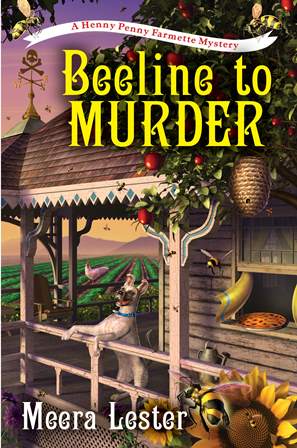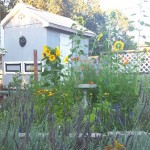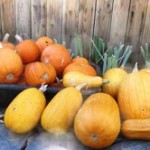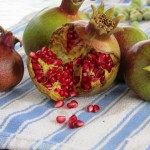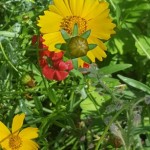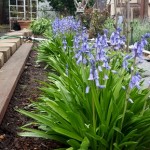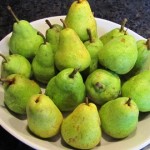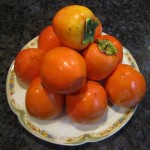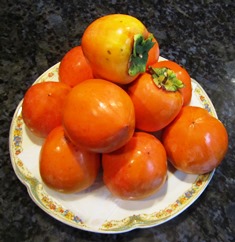Enjoy Seasonal Fruit Year-round
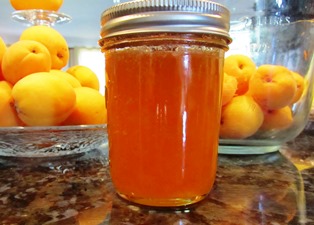
In the Bay Area, strawberries, blueberries, and early varieties of plums ripen in the spring. By the start of summer, a lot of stone fruit is available. Look for apricots and peaches and later varieties of plums during early June through July. Find peaches and nectarines by mid-August.
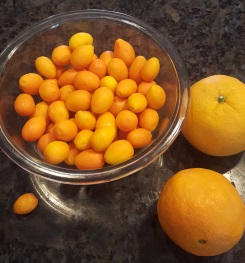
for winter marmalade
The end of the stone fruit heralds the arrival of late-summer pears. Local suppliers offer these fruits at farmers’ markets and to stores throughout the harvest period so buyers can be assured of fruit quality and freshness.
To preserve your favorite summer stone fruit, you have several options. Hot-water canning supplies come in handy for preserving fruit into jam, jelly, marmalade, and conserve. A dehydrator produces dried fruit and leathers. Finally, some fruits can be made into jam or marmalade and refrigerated for use over a week or two or frozen.
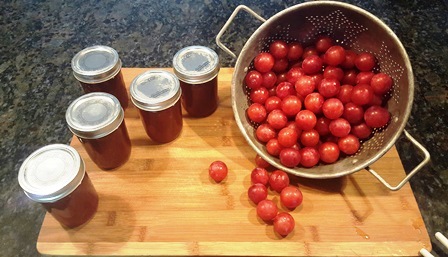
As summer nears its end, look for a large variety of pears and persimmons to show up on store shelves. Then, as the winter holidays near, citrus (oranges, kumquats, lemons, and limes) begin to ripen and can be preserved into a soft spread such as a conserve, jam, or marmalade.
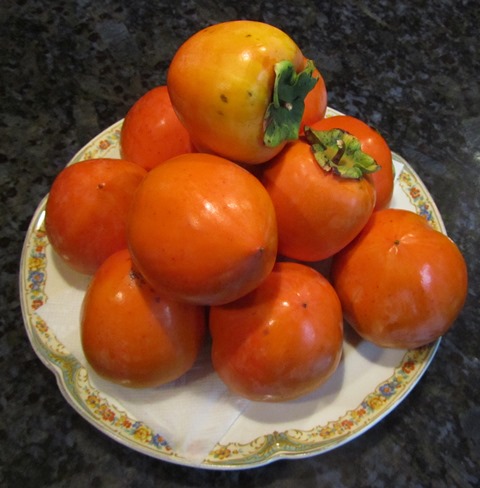
If country living topics interest you and you enjoy a good mystery with recipes and tips for keeping chickens and bees, check out my Henny Penny Farmette series of cozy mysteries, informed by my real-life farmette experiences.
The novels include A BEELINE TO MURDER, THE MURDER OF A QUEEN BEE, and A HIVE OF HOMICIDES. All are available online or wherever books are sold.
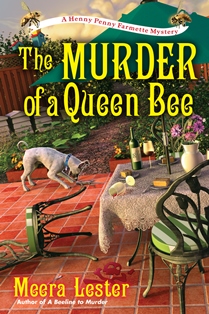
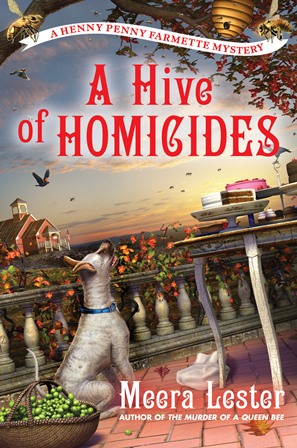
In Nature Now, Fall Fruits Hang Like Jewels
On the Henny Penny Farmette, the signs of autumn’s arrival are evident almost everywhere in our orchard and garden.
I’ve made jams, cooked produce, and dried fruit. Of late, I’ve been harvesting heirloom seeds for next year’s garden. The birds will pick over what’s left and the soil can rest. Fall fruit now hangs on the trees in a showy splendor.
The pomegranate trees support a multitude of leathery-skinned, ruby-red fruit holding hundreds of sweet seeds. On the Fuyu and Hachiya persimmon trees, the golden fruits hang like ornaments. In the squash patch, French sugar pumpkins cling to dry, stringlike vines and you might find a butternut squash here or there.
I picked most of the late summer pears two weeks ago, putting a few in paper bags and storing them in a cabinet for two days. That allows them to reach the perfect ripeness for eating them fresh.
We grew corn this year, but the triple-digit heat and smoke from wildfires turned the lush, tall green plants to papery stalks before the corn really ripened. Still, before the stalks can now be composted, a few can be bundled together and placed in a porch corner to symbolize the arrival of Autumn and her festivals.
_________________________________________________________________________
If you enjoy reading about country living topics, check out my Henny Penny Farmette series of mysteries.
Also, I have written extensively about self-help, spirituality, and wellness. Find my books on Amazon, Barnes & Noble, Kobo Books, and everywhere books are sold, online or in brick-and-mortar stores.

More than 150 rituals for sound mind, strong body, and meaningful connections to the people around you
A CHORES LIST FOR THE AUTUMN GARDEN
Each year on the first day of autumn here on the Henny Penny Farmette, I take stock of my fruit trees and vegetable and flower gardens.
The Old Farmer’s Almanac points to mid-October 2019 for early rain in Northern California, so there’s much for me to do over the next two or three weeks.
- Nothing says “autumn” like ripe pomegranates
My chores list includes the following items. They’re roughly the same from year to year.
1. Gather seeds from self-seeding or heirloom, open-pollinated plants (flowers and vegetables) for next year’s garden. Dry seeds and store them for planting next spring.
2. Sow spring-blooming bulbs (such as daffodils, tulips, hyacinths, ranunculus, crocus, and buttercups available in garden centers now).
3. Turn soil and prepare beds for the cool-season vegetable garden (broccoli, cabbage, beets, and parsnips).
4. Inspect and divide perennials.
5. Harvest olives and preserve them.
6. Pick late summer pears and ripe pomegranates. The leathery covering of pomegranates already may be splitting open and showing ruby red seeds. The juice of the seeds makes a wonderful jelly.
7. Check persimmons for ripeness. Pick if they’re ready. They might need another month.
8. Harvest and store pumpkins and butternut squash. Peel, remove seeds, and cut the flesh into squares for freezing.
9. Compost old garden vines and vegetable plants that are done bearing for the season. Check tomato plants infected with bacterial or fungal diseases and do NOT add any of these to the compost pile.
10. Begin the process of cleaning and storing gardening items not required over the winter.
11. Sow spring-blooming wildflowers in prepared beds.
12. Schedule time to prune back crop-bearing fruit trees (like apricot, peach, and plum).
I actually look forward to those chores. They’re part of the natural rhythm of farmette life. With a list and plan to get everything done, I won’t be caught by surprise when the weather turns cold, dark, and rainy.
________________________________________________________________________________________________
If you enjoy reading about farming, country living, keeping of bees and chickens, and gardening, check out my Henny Penny Farmette series of cozy mysteries. They’re chocked full of ideas, tips, and delicious recipes for country living.
Also, take a look at my numerous self-help and wellness books. All are available at Amazon.com, Barnes & Noble.com, Walmart.com, and other online and traditional bookstores everywhere.

More than 150 rituals for sound mind, strong body, and meaningful connections to the people around you
“Fruit of the Gods” Ready To Eat Now
If you love persimmons, it might interest you to know they are from a genus known by the Greeks as Diospyros kaki, “fruit of the gods.” But these sweet fruits must be fully ripened before consuming. The Fuju and Hachiya are the two main types grown in Northern California gardens. My favorite is the Hachiya; it has to be one of the most sensuous and luscious fruits on the planet to eat.
The Fuju fruit is more like an apple in shape and texture. You can differentiate it from the Hachiya because Fuju is squat and firm-fleshed, reddish yellow, and about the size of a baseball whereas the Hachiya fruit is pendulous-shaped, soft like an overripe plum, orange-scarlet in color, and about the size of a hefty apple or softball. Tamopan is a larger persimmon with a shape like a turban whereas Chocolate is so-named for its brown streaks; its flesh is quite sweet.
Persimmon trees look stunning in a garden, possessing outstanding ornamental qualities. They are relatively pest-free and produce consistently when mature. These small trees are easy to grow, have striking foliage and interesting branch structure, exposed after the leaves have fallen in autumn. They can even be espaliered against a frame or wall.
Hachiya persimmons are astringent on the tongue unless eaten when they are fully soft-ripe. Birds love them, too, so you have to pick them before they are pecked. Ripen in the kitchen before eating or cooking with them. If you want to dry persimmons, pick while the fruit is still firm and with some stem. Tie a string around the stem and hang in the sun until the fruit becomes dried. It will taste something like a high-quality prune or lichti.
Don’t Put Away Your Gardening Gloves and Trowel Just Yet
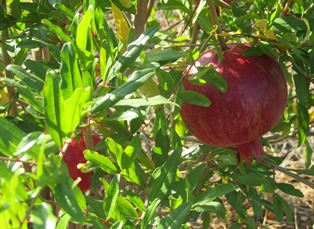
Red pomegranates hang like jewels in contrast to the lush green leaves that will soon turn yellow and drop
Autumn has a arrived. The fruit and nut trees are shedding leaves and preparing for winter dormancy. Pumpkins are taking center stage for harvest festivals and Halloween decorations. Apples have been gathered are are being peeled and cored for pies and cider making.
If you are thinking about putting away your gardening gloves and stashing your trowel and wheelbarrow, hold on a minute. It’s possible to extend the growing season from summer into autumn and even later . . . by taking a few precautions.
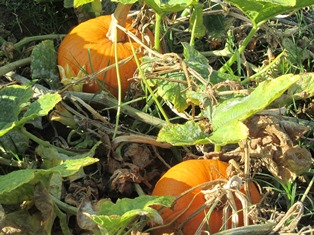
Pumpkins in my garden sport golden shades of orange and yellow, signalling arrival of the cool season
As the sun slants lower in the sky giving us shorter days, less light, and fewer hours to garden, there are some plants that will grow just fine during the cool days of fall.
However, you must select the right plants for the cool season. In addition, you’ll increase your plants’ survival rate by growing them in raised beds and boxes with good soil and aged manure. Wet them well if a cold front comes through (it’s counter-intuitive but moisture will protect their roots). Keep them warm at night with plant covers that you take off during the day when they can make the most of the sun’s warmth and light.
Consider growing some of these cool season crops: beet, bok choy, broccoli, bulb onion, chard, fava bean, garlic, green onion, kale, kohlrabi, lettuce, radish, spinach, and turnip. I’ve found many of these plants available at my local DIY garden center during the past two weeks.
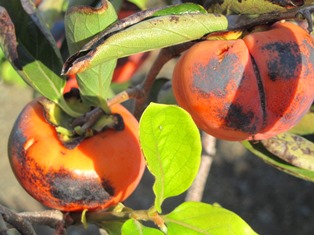
Coffee Cake, a new variety of Fuyu persimmon I’m growing will soon be ripe for picking, slicing, and serving
For November, depending on weather conditions in local microclimates, Northern California gardeners can grow fava bean, garlic, greens, leek, lettuce, onion, pea, radish, and spinach as well as some perennial herbs, especially in boxes and/or pots on the patio or in protected places such as porches.
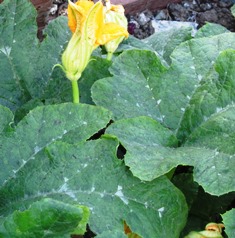
My pumpkin vines, over 25 feet long, still have numerous blooms and lemon-size green pumpkins hanging on
Because of Northern California’s mild Mediterranean climate, gardeners can enjoy cultivating plants from spring through the fall, not just during our hot summer months. If it gets too chilly for the poor honeybees to pollinate, get yourself a soft watercolor brush and do the pollination yourself.
Finally, it’s worth noting that during our rainy season, the water for the garden falls from the sky rather than from the hose. One of the many reasons not to put away the garden tools just yet.
 Facebook
Facebook Goodreads
Goodreads LinkedIn
LinkedIn Meera Lester
Meera Lester Twitter
Twitter




